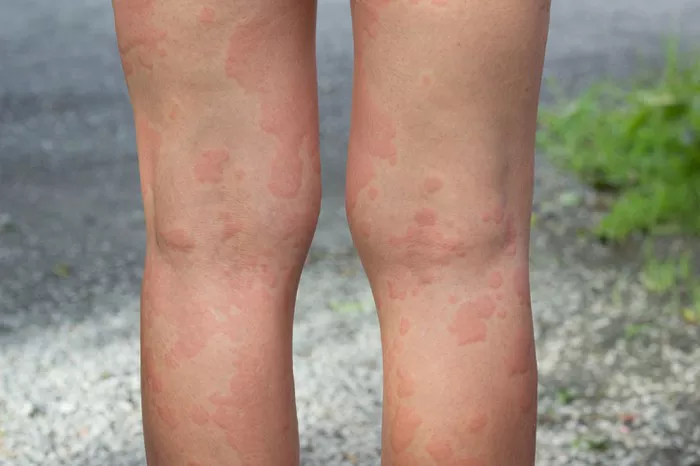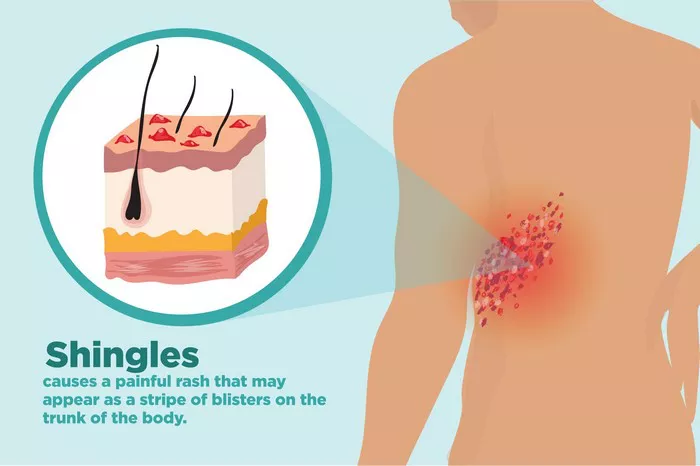Ringworm, despite its name, is not caused by a worm but by a group of fungi known as dermatophytes. These fungi infect the skin, hair, and nails, leading to the characteristic symptoms of ringworm. The term “ringworm” comes from the circular, ring-like appearance of the rash that often develops on the skin.
SEE ASLO: Best Cure for Ringworm on the Scalp
Symptoms of Ringworm
Ringworm manifests in several ways, depending on the affected area. Common symptoms include:
Circular Rash: Often reddish or pink in color, the rash typically has a clear or scaly center with a slightly raised, defined edge.
Itching: The affected area is usually very itchy, causing discomfort.
Scaling: The skin within the rash may peel or become scaly, especially as the infection progresses.
Cracking or Blistering: In severe cases, the skin may crack, blister, or ooze, leading to more significant irritation.
Understanding these symptoms is crucial for early detection and treatment, which can prevent the spread of the infection to others.
Modes of Transmission:
Direct Contact
Ringworm spreads primarily through direct contact with an infected person or animal. When the skin of an infected individual comes into contact with another person, the fungi can transfer, leading to a new infection. This is especially common in environments where close physical contact occurs, such as in schools, daycares, and sports teams.
Indirect Contact
Ringworm can also be transmitted through indirect contact with contaminated objects. Items like towels, clothing, combs, and bedding can harbor the fungi and spread the infection when shared. Even surfaces like gym equipment, locker room floors, or communal showers can be sources of contamination. It’s essential to be aware of these risks and take appropriate precautions to minimize exposure.
Spores in the Environment
The fungi that cause ringworm can produce spores, which are hardy and can survive in various environments for extended periods. These spores can be found in soil, dust, or on surfaces where an infected person or animal has been. The spores can remain infectious for months, making it easy for the fungi to spread long after the initial contact.
Animal-to-Human Transmission
Pets and other animals are common carriers of ringworm, particularly cats, dogs, and farm animals. Infected animals may not always show visible symptoms, making it difficult to detect the infection. However, they can still spread ringworm to humans through direct contact or by contaminating the environment with spores. Regular veterinary check-ups and monitoring pets for signs of infection are crucial steps in preventing the spread of ringworm from animals to humans.
Prevention Strategies:
Personal Hygiene
Maintaining good personal hygiene is one of the most effective ways to prevent the spread of ringworm. This includes:
Frequent Handwashing: Regularly wash hands with soap and water, especially after touching pets, using communal facilities, or handling objects that may be contaminated.
Showering After Sports: After participating in sports or activities that involve close physical contact, shower promptly to remove any potential contaminants from the skin.
Avoiding Contact with Infected Individuals and Animals
Avoiding close contact with individuals or animals known to have ringworm is crucial in preventing infection. If you or someone in your household is infected, take measures to minimize contact until the infection is fully treated. This includes isolating pets with suspected infections and avoiding shared spaces or items with infected individuals.
Using Separate Towels and Personal Items
To prevent indirect transmission, avoid sharing personal items such as towels, brushes, and clothing. Each household member should have their own set of these items, and they should be regularly washed and disinfected.
Cleaning and Disinfecting Shared Surfaces
Regularly cleaning and disinfecting surfaces in communal areas can help reduce the risk of ringworm transmission. This includes wiping down gym equipment, sanitizing shower floors, and washing bedding and towels frequently in hot water.
Preventing Contact with Contaminated Soil and Dust
Since ringworm spores can survive in soil and dust, it’s important to take precautions when handling these materials. Wearing gloves while gardening or cleaning, and avoiding direct contact with potentially contaminated soil can help prevent infection.
Regularly Checking Pets for Signs of Ringworm
Pet owners should routinely check their animals for signs of ringworm, such as patches of hair loss, scaly skin, or excessive scratching. If you suspect your pet has ringworm, seek veterinary care promptly to prevent the spread of the infection to other animals or humans.
Ringworm Prevention
Wash hands frequently with soap and water.
Avoid close contact with infected individuals or animals.
Use separate towels, clothing, and personal items.
Clean and disinfect shared surfaces regularly.
Wear gloves when handling soil or potentially contaminated materials.
Monitor pets for signs of ringworm and seek veterinary care if needed.
By following these strategies, you can significantly reduce the risk of ringworm transmission and protect yourself and others from this common fungal infection.
Conclusion
Ringworm is a widespread and highly contagious fungal infection that can easily spread from person to person, from animals to humans, and through contact with contaminated objects and surfaces. The fungi responsible for ringworm are remarkably resilient, surviving for long periods in environments that facilitate transmission, such as warm, moist areas and communal spaces. Direct contact with an infected individual or animal is the most straightforward method of transmission, but indirect contact through contaminated items like towels, clothing, and bedding is also a significant factor in the spread of the infection.
Related Topics:



























